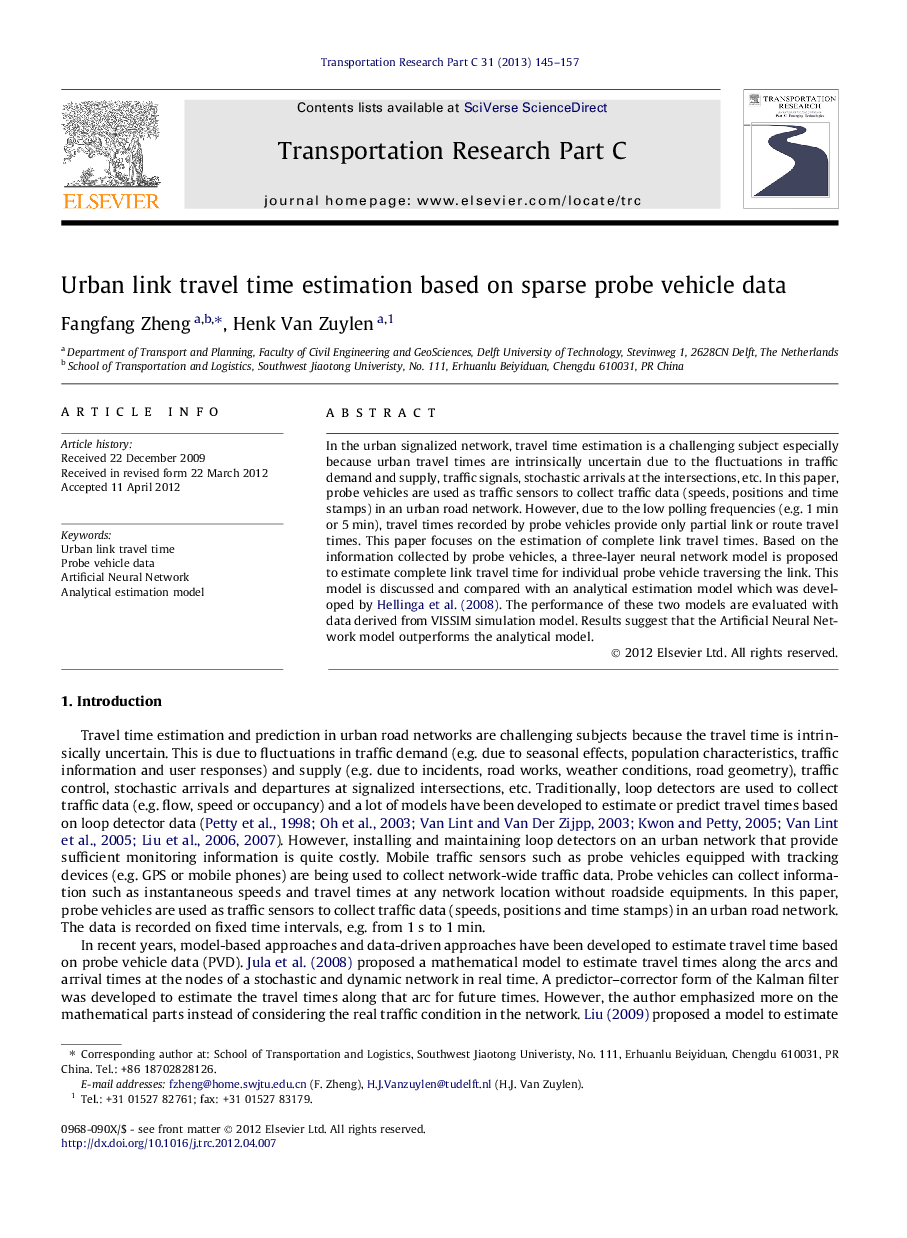| Article ID | Journal | Published Year | Pages | File Type |
|---|---|---|---|---|
| 525395 | Transportation Research Part C: Emerging Technologies | 2013 | 13 Pages |
In the urban signalized network, travel time estimation is a challenging subject especially because urban travel times are intrinsically uncertain due to the fluctuations in traffic demand and supply, traffic signals, stochastic arrivals at the intersections, etc. In this paper, probe vehicles are used as traffic sensors to collect traffic data (speeds, positions and time stamps) in an urban road network. However, due to the low polling frequencies (e.g. 1 min or 5 min), travel times recorded by probe vehicles provide only partial link or route travel times. This paper focuses on the estimation of complete link travel times. Based on the information collected by probe vehicles, a three-layer neural network model is proposed to estimate complete link travel time for individual probe vehicle traversing the link. This model is discussed and compared with an analytical estimation model which was developed by Hellinga et al. (2008). The performance of these two models are evaluated with data derived from VISSIM simulation model. Results suggest that the Artificial Neural Network model outperforms the analytical model.
• Travel times are estimated from sparse probe vehicles provided with GPS. • A new method is introduced based on an Artificial Neural Network. • Different estimation methods are compared for different traffic conditions. • The ANN model performs better than Hellinga’s method with polling interval of 60 s.
